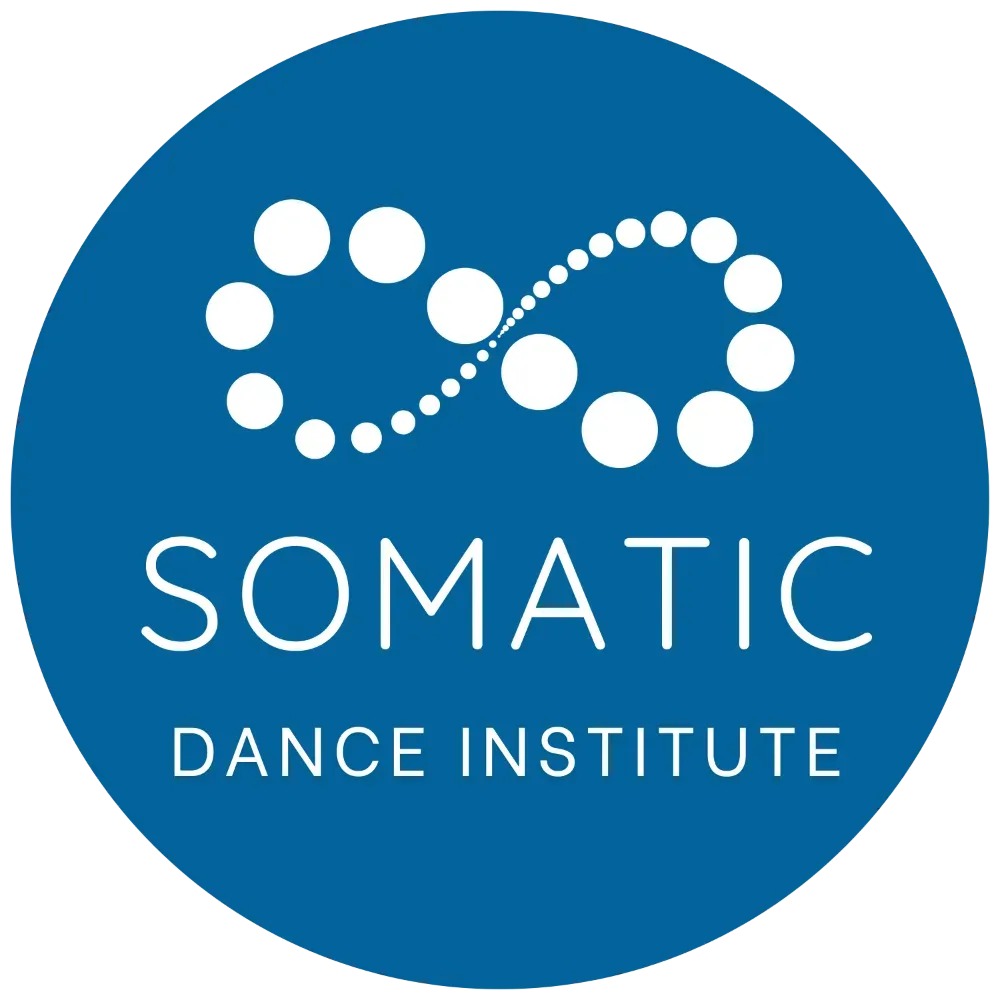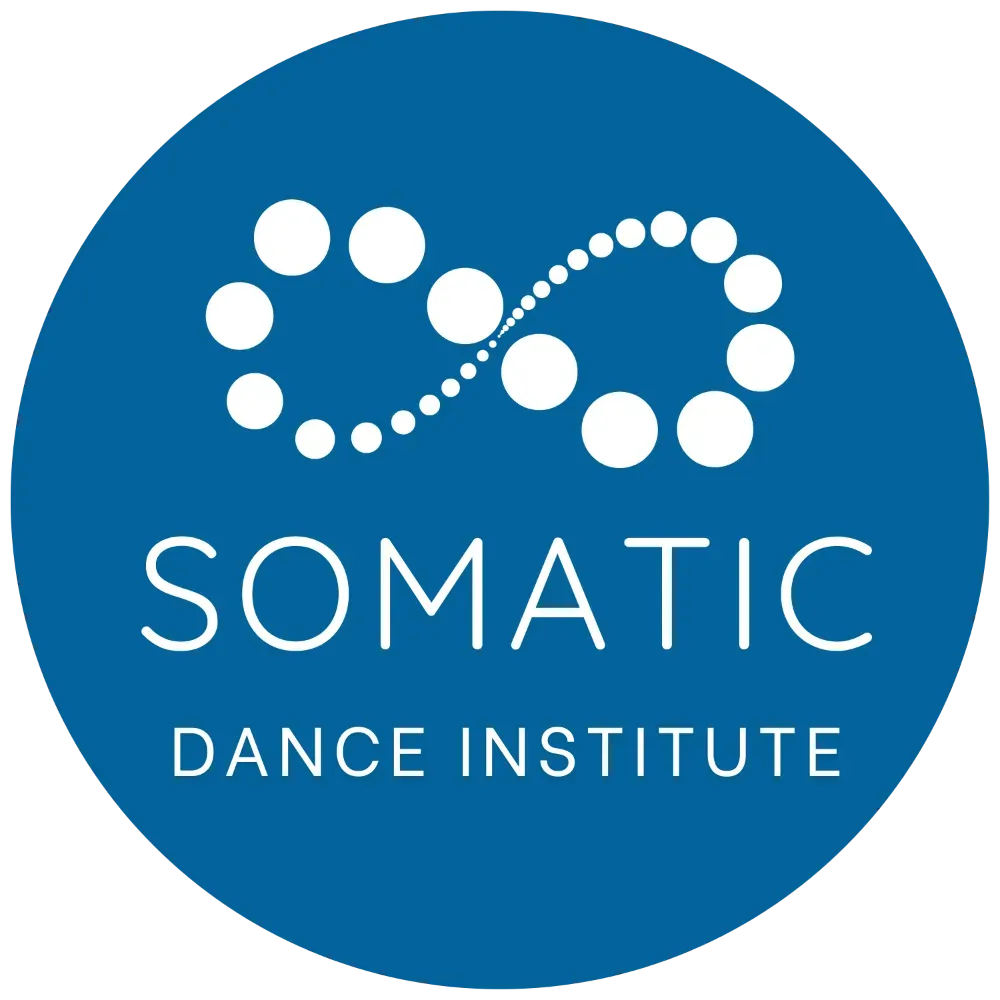
A lineage-rooted, clear-eyed guide (with love) from the Somatic Dance Institute
By Sah D’Simone – Founder of the Somatic Dance Institute & Creator of the Somatic Activated Healing™ Method
Somatic dance is not a trend, a vibe, or a playlist with candles. It’s a way of knowing—an embodied study of the self from the inside out.
The word somatics was coined by philosopher Thomas Hanna in the 1970s to mean “the body as experienced from within,” and the field has since grown into a rich ecosystem of movement, education, and healing modalities that foreground interoception, sensation, and agency. (source)
Below, I trace the roots, name names (with credit where it’s due), untangle common conflations, and then share how our Somatic Activated Healing™ (SAH) Method stands apart.
A working definition
Somatic dance is an internal, process-oriented movement practice where sensation leads and form follows.
The goal is not to perform for an observer but to feel, to integrate, to transform—often in service of nervous system regulation, emotional digestion, and insight.
The term somatics itself centers first-person bodily awareness and has been defined in the literature as a field of bodywork and movement studies that emphasizes internal perception over external appearance. (Source)
Somatic dance is never: choreography-first performance training; technique-for-technique’s-sake; a bypass around feeling; or a free-for-all devoid of container and consent.
Lineage matters: a (necessarily incomplete) timeline of pioneers
Somatic dance didn’t appear out of thin air. It braided together multiple streams of inquiry:
- Early body–mind educators.
F.M. Alexander (Alexander Technique, 1890s) explored how awareness and use of the self shape movement and voice; his work seeded generations of performers’ training.
Moshé Feldenkrais (Feldenkrais Method, mid-20th c.) developed an educational system using gentle movement to teach self-awareness and improve function. - Dance as healing & community process.
Anna Halprin reimagined dance as life practice, ritual, and social healing; with Daria Halprin she founded the Tamalpa Institute in 1978, shaping expressive arts therapy and somatic education. - Somatic movement education.
Bonnie Bainbridge Cohen created Body-Mind Centering® (School founded 1973), a deep study of body systems, developmental movement, and consciousness.
Joan Skinner developed Skinner Releasing Technique (early 1960s), a pioneering approach to letting go of unnecessary tension through imagery and release. - Dance/movement therapy and clinical bridges.
The American Dance Therapy Association (ADTA), established in 1966, consolidated earlier hospital-based work by pioneers like Marian Chace and helped define dance/movement therapy as a mental-health profession. - Conscious/freeform movement lineages.
Gabrielle Roth’s 5Rhythms (1970s) offered a map—Flowing, Staccato, Chaos, Lyrical, Stillness—that profoundly influenced conscious dance communities globally.
This is not an exhaustive list. It’s an invitation to honor the teachers who tilled the soil so many of us now grow in.
Deeper roots: trance and embodied dance across cultures
Long before “somatics” had a name in the West, humans danced to heal, to pray, to know. Here are a few examples—offered with respect and without collapsing distinct traditions:
- Mevlevi Sema (Türkiye).
The whirling ceremony of the Mevlevi Sufi order—inscribed by UNESCO as Intangible Cultural Heritage—embodies remembrance of the Divine through turning. - Gnawa (Morocco).
Night-long lîla ceremonies weave trance music and dance as communal spiritual technology; Gnawa was recognized by UNESCO in 2019. - Kalahari San trance-healing dances (Southern Africa).
Communal, often all-night dances facilitate altered states and collective healing among Ju/’hoansi and related San communities. - Haitian Vodou ceremonies.
Drumming, song, and dance can culminate in possession (chwal being “ridden” by the lwa) as part of legitimate, structured religious rites. - Candomblé (Brazil).
Ritual drumming, song, and dance invite orixás to “mount” devotees, an Afro-diasporic lineage intertwined with Yoruba, Fon, and Bantu traditions.
Do not confuse these with the “ecstatic dance night” offerings at your local movement studio. They are sacred, complex cultural practices with theology, ethics, and lineages.
We reference them here to honor ancestry and to remind modern practitioners that trance through embodied dance is ancient, and not ours to rebrand.
How “somatic” entered the vernacular
The 20th century’s body–mind educators, dance therapists, and postmodern dance pioneers normalized first-person bodily awareness in education, clinics, and studios.
By the 1970s, Hanna’s word somatics gave shared language to a field already in motion. Today, “somatic” is used widely—sometimes carelessly. When in doubt, return to the core: internally led, sensation-first, consent-centered practice.
Somatic dance vs. performative contemporary vs. ecstatic dance (and DMT)
Somatic dance
- Focus: interoception, emotion processing, integration.
- Container: clear consent, options, rest is allowed, no compulsion to “look” a certain way.
- Outcome: regulation, insight, authentic movement.
Performative contemporary dance
- Focus: technique, composition, staging, audience reception.
- It may include somatic tools in training, but the aim is public performance and virtuosic clarity rather than inner process.
Ecstatic dance (community practice).
- Focus: freeform dance as community ritual, often with a DJ-led sound journey.
- Common guidelines: no talking on the dance floor, no photos/video, barefoot, sober space, consent in connection.
- Great for expression and connection; not necessarily structured for trauma-informed emotional alchemy unless facilitators explicitly create that container.
Dance/Movement Therapy (DMT).
- A mental-health profession; credentialed therapists use movement as psychotherapy within clinical ethics and scope.
These overlap—but they are not the same.
What somatic dance is not
- It is not a choreographed class (though skilled somatic teachers may borrow choreographic tools).
- It is not performance training (though your movement may be beautiful to witness).
- It is not a substitute for clinical care when clinical care is needed.
- It is not cultural appropriation. We learn from global lineages with respect; we do not copy rituals outside their context.
How the Somatic Activated Healing™ (SAH) Method goes further
How the Somatic Activated Healing™ (SAH) Method Goes Further
The SAH Method is not about performance.
It’s a structured, trauma-informed ritual space that draws on movement, breath, Buddhist wisdom, and restorative justice principles to help us release what binds us to the past — our own and what we’ve inherited through our lineages.
As the body opens, we enter a trance-dance state: an embodied space where the sense of self softens, the emotional body unlocks, and clarity rises through the body’s own language. In this expanded field, what has been held loosens its grip, messages emerge from within, and we return to the world with fresh eyes — more spacious, more connected, more free.
We begin by returning to the body. Breath steadies the ground, orientation widens the field, and the nervous system begins to trust that it’s safe to soften. This felt sense of safety is the foundation.
From here, we work with Body Keys: breath-to-movement postures intentionally designed to unlock the emotional body. Practiced repetitively, they don’t aim for perfection, but for access. As the body loosens, what has been stored — grief, fear, anger, hope, joy — moves through sensation instead of staying frozen in the archive of the past.
Buddhist psychology frames this process. Teachings on impermanence and non-self help us meet whatever surfaces without taking it personally or tightening around it. What was once “my story” becomes energy moving through.
A restorative justice lens expands the work from the individual to the collective. Healing doesn’t happen alone — we name harm, acknowledge impact, and make room for accountability and repair. This shared field of care helps rebuild belonging and agency, both personal and communal.
Then trance arrives — not forced, but as a natural opening once the emotional body has been met and moved. In trance, the sense of “I” softens. With eyes closed, the usual boundaries of time and self loosen. Ancestral burdens, inherited narratives, personal pain — all the threads that bind us to the past begin to unravel. In that openness, insight arises on its own. The oracular state isn’t performance. It’s direct knowing from within.
The music journey holds the arc. Each soundscape is carefully crafted to guide the nervous system through release, expansion, and integration — a sonic architecture for what words can’t contain.
And then, integration — the most important part. What’s touched in trance must be brought home. We anchor what we receive — a shift, a message, a truth — through ritual, action, or embodied choice. We practice with eyes closed so that when we re-enter the world with eyes open, we carry more clarity, more space, more humanity.
The SAH Method is a place to let go — again and again — so the unseen can be seen, what’s held can be released, and the self can meet life with less armor and more vision.
Clear credit where it’s due
- Conceptual foundation for “somatics” as first-person bodily awareness: Thomas Hanna.
- Technical lineages shaping somatic movement: Alexander Technique, Feldenkrais Method, Body-Mind Centering, Skinner Releasing.
- Dance as communal healing and social art: Anna & Daria Halprin / Tamalpa Institute.
- Conscious/freeform movement maps: Gabrielle Roth (5Rhythms).
- Clinical frame: American Dance Therapy Association and early hospital-based pioneers such as Marian Chace.
- Cross-cultural trance and embodied ritual: Mevlevi Sema, Gnawa, San healing dances, Haitian Vodou, Candomblé.
How to practice (briefly)
- Consent first. Your body leads.
- Sensation before story. Keep checking: what am I actually feeling?
- Allow the arc. Stir, express, digest… then open to stillness and listening.
- Belonging over perfection. You can sit, cry, shake, sing, or be still. All movement (and non-movement) is welcome when it honors your truth and the space.
Closing
Somatic dance is a remembering. Not performance for the crowd, but devotion to the truth that moves through you. When we feel fully, we become usable by life—clear enough to receive what is asking to be born.
If you share or teach this work, please cite the sources and teachers who shaped you. Our field gets stronger, truer, and more ethical when we honor the lineages we’re standing on.


